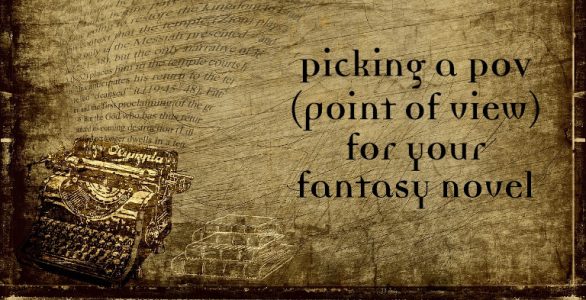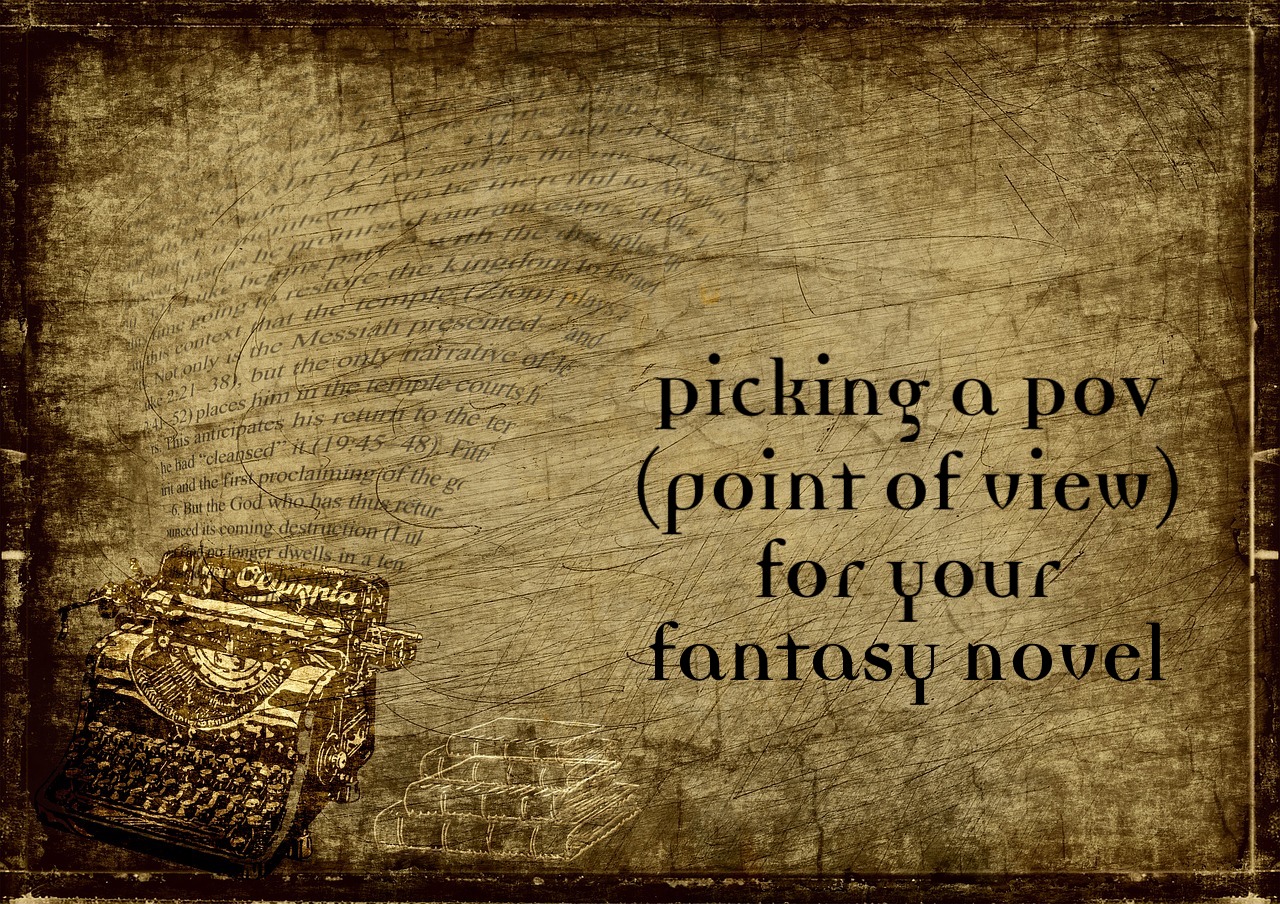
If you’ve already started writing your fantasy novel, then STOP! Just by starting to write you’ve already made a major decision that affects the entire story you want to tell, and it’s one that deserves careful consideration. When you write, you do so from a particular POV or point of view. But you want to make sure you pick the best POV for your fantasy novel. This article will give you guidance on your options and how to make the right choice for your story.
Defining POV
When you’re writing fiction, POV can be defined as the narrator’s position in relation to the story being told. The Literary Devices website puts it this way: “…point of view is the mode of narration that an author employs to let the readers ‘hear’ and ‘see’ what takes place in a story…”
There are four basic options when it comes to POV for your fantasy novel:
First Person Point of View
You write the story as if your main character is telling it (although it could also be a secondary character telling the story). This means readers won’t really know what’s happening in the minds of other characters, although the narrating character may speculate on that.
Everything is seen through the eyes of the narrating character and readers are privy to the inner thoughts of the character to the extent that they describe what they are thinking and feeling. As you can imagine, pronouns such as “I” and “we” feature prominently in a first-person POV fantasy novel. You have to write by truly inhabiting the character who is telling the story.
Examples of great first-person fantasy include the Chronicles of Amber by Roger Zelanzy (the first series of books is told from the POV of Corwin), the Dresden Files urban fantasy books by Jim Butcher (told from the POV of Harry Dresden), and The Hunger Games trilogy by Suzanne Collins (told from the perspective of Katniss Everdeen).
Second Person Point of View
This one is very tricky to pull off, is shunned by most publishing professionals, and is best not attempted by a newbie fantasy novel writer. As you can imagine, it involves a lot “you” pronouns. It’s quirky and different, to be sure, and can be very effective if you’re an excellent writer. However, it’s generally not recommended for novels because the reader can get tired of being told what is happening to them.
The interesting thing about second person is that the POV character is the reader! And the author is telling you your own story. See why it’s tricky? This is why it tends to work best only for shorter pieces such as a short story, choose-your-own-adventure piece, a video game or board game story, and so on. If you’ve ever played a fantasy role-playing game like Dungeon and Dragons, the dungeon master is typically setting up the campaign and moving it forward by telling the players the story in second person POV.
Third Person Point of View
Third person is a very natural choice for many writers. A narrator is telling the story, but usually readers have no idea who it is, nor does it matter. All the pronouns used by the narrator are third-person (he, she, it, them, they).
The third person narrator is often thought of as all-knowing or omniscient, but there is a lot of variation in how this is handled. If you go all-out with unlimited omniscience, the narrator knows the mind and thoughts of any and all characters. In other cases, the idea is to still tell the story through the eyes and mind of just the main character, so the omniscience of the narrator only applies to the main character. Yet another choice is omniscience regarding just a few characters, which gives you the option of focusing each chapter on a different character’s POV if that seems appealing to you.
The Harry Potter books by J. K. Rowling are mostly third person limited because readers typically only know the thoughts, feelings, and experiences of Harry (there are occasional departures from this at some points in the series). In The Hobbit and The Lord of the Rings trilogy, J.R.R. Tolkien employs the third-person unlimited omniscience POV. Although much of the writing is mostly focused on the points of view of Bilbo Baggins in The Hobbit and Frodo Baggins in The Lord of the Rings, other characters also get some of the POV focus at different points in the stories.
How to Pick the POV for Your Fantasy Novel
So how do you go about choosing the best POV for your story? Well, there are some trends you might want to know about. First person is the most popular choice for young adult fantasy (although there’s also a good deal of limited third-person focused on the POV of the protagonist). The same holds true for romance fantasy. If you’re going for the more traditional big epic or high fantasy, third person omniscient is probably the most common choice. First person POV is the most common choice for urban fantasy. Third person limited tends to be the choice among fantasy novels with a strong mystery or thriller flavor added in. But these are just trends, and you don’t have to follow trends!
What’s more important is to think about what you want to accomplish with your story. If what you want is a very intimate relationship between the reader and the narrator, then nothing really beats the first person POV. However, it also runs the risk of readers feeling like everything is being told to them instead of really seeing what is happening. But a very limited form of third-person omniscience focused solely on a single character can solve for that and still come very close to the intimacy of a first-person narrator.
When you increase the omniscience factor in third-person POV, it’s almost like zooming out from a more limited POV to get a broader view of the story, which is perhaps why it often works so well with high epic fantasy stories. The narrator then has more room to interject personal opinions and thoughts into their omniscient view of the action and characters.
You can also mix and match, to some extent, as long as everything is clear and doesn’t confuse the reader. Some authors have mixed third person with first person by including journal entries from the protagonist to get that character’s experiences and thoughts from their own perspective.
Ask yourself how well you know your main character. If you can truly inhabit that role, then a first person POV might make the most sense (or that very limited third person option). The range of choices in the third person POV also opens up the possibility of getting into the heads of more than one character, which can be very useful with multiple plot lines that need to be explored simultaneously. Be sure to make each switch to a different character’s POV very clear. Jumping from one character’s point of view to another mid-chapter can confuse readers. It’s called “head hopping” and it’s generally a bad idea unless your point is to give the reader a headache.
With the above guidelines in hand, carefully choose the best POV for your fantasy novel and start writing!
Try tooleybook, the free tool created for writing books. It takes less than 30 seconds to create an account and start writing.
With tooleybook you can view timelines, chapter purpose, word count, track time and place, tag scenes, move and organize scenes and more...More Info


